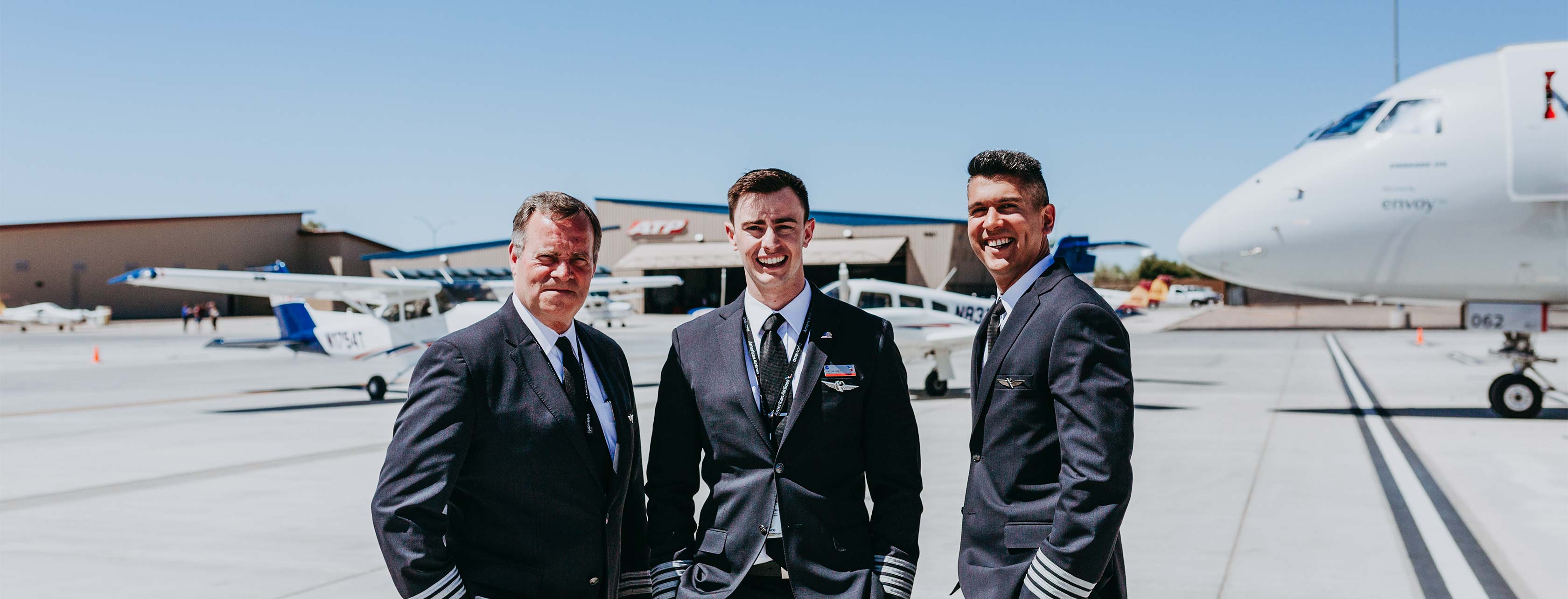How Long Does it Take to Become a Commercial Airline Pilot?
To fly as a commercial airline pilot, you will need 1,500 hours of experience, which can be earned in . ATP's accelerated commercial pilot training programs provide a structured timeline and shorten the time it takes to gain experience and meet qualifications. Receive the training, certifications and flight time needed to start your career as an airline pilot in the fastest timeframe possible. When seniority is everything, get there first with ATP Flight School.
Steps of How to Become a Commercial Airline Pilot »
Commercial Airline Pilot Flight Time Requirements
The FAA requires 1,500 hours for a pilot to become an Airline Transport Pilot. Learn more about the steps to become a pilot and additional commercial pilot license requirements, including frequently asked questions about who can become a commercial airline pilot.
View additional information on ATP's Airline Career Pilot Program Admission Requirements »
Typical Timeline to Become a Commercial Airline Pilot
While individual timelines may vary, a typical path to becoming a commercial airline pilot through an accelerated program looks like this:
- 0–12 months: Complete private, instrument, and commercial pilot certificates, plus flight instructor certifications (CFI and CFII).
- 12–24 months: Work as a flight instructor to build experience and reach 1,500 total flight hours.
- 24+ months: Meet hiring requirements and begin flying for a regional airline as a first officer.
Altogether, a focused student can go from zero time to airline eligibility in about two years, depending on their dedication and adherence to a structured training schedule.
Flight Training
Are you starting your career as an airline pilot? Gain the training and certifications required to become a pilot in ATP's accelerated Airline Career Pilot Program. Learn more about how long it takes to become a pilot.
Most pilots achieve the required flight time to qualify for airline employment by working as a Certified Flight Instructor (CFI). After completing their commercial and instructor certifications, ATP graduates typically build experience by instructing new students—an efficient, cost-effective path to reaching 1,500 hours. With ATP's nationwide network of flight training centers and high student demand, instructors can log the necessary hours in about two years or less. This structured progression enables aspiring pilots to quickly meet airline hiring minimums and begin their professional flying careers with a competitive edge.
Time to the airlines depends on how efficiently a pilot progresses through training and time-building. ATP’s fast-track training model is designed to reduce delays and provide a direct path from zero experience to airline eligibility. Pilots who follow the program's recommended timeline often achieve their goals faster than through traditional training paths, making seniority—and a long-term airline career—more accessible sooner.
What Is an Airline Transport Pilot (ATP) Certificate?
The Airline Transport Pilot (ATP) certificate is the highest level of pilot certification issued by the FAA. It is required to serve as a captain or first officer for scheduled airlines. To qualify, applicants must be at least 23 years old, hold a commercial pilot certificate with instrument rating, pass the ATP written and practical exams, and log a minimum of 1,500 total flight hours.
Can You Become an Airline Pilot Without a Degree?
A college degree is not required by the FAA to become an airline pilot, and many major and regional airlines do not require one either. ATP Flight School focuses on helping students meet the flight experience and certification requirements that airlines value most, regardless of academic background.
